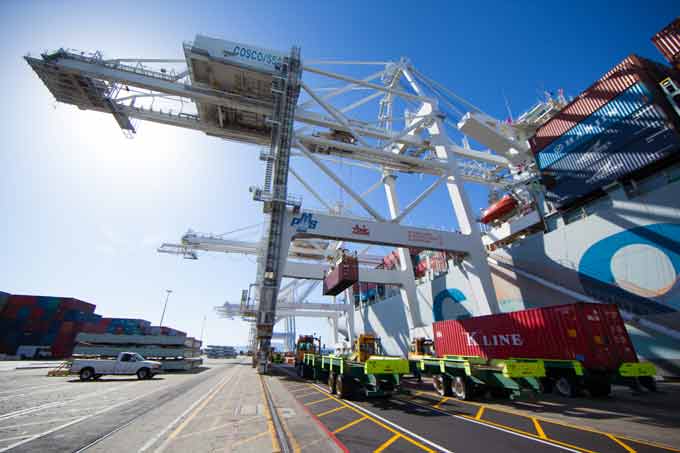The Boards of Harbor Commissioners for both the Port of Los Angeles and the Port of Long Beach unanimously approved an update to their joint environmental initiative, the Clean Air Action Plan.
The third rollout of the program mandates that the ports’ entire trucking fleet be zero-emission by 2035 and all of its cargo handling equipment by zero-emissions by 2030. The plan also calls for expanding the use of on-dock rail with the goal of moving 50 percent of all cargo leaving the ports by that mode of transportation. A timeline for that was not specified.
“Collaboration will be critical to our success,” Long Beach Harbor Commission President Lou Anne Bynum said in a statement. “Moving the needle to zero requires all of us — the ports, industry, regulatory agencies, environmental groups and our communities — to pool our energy, expertise and resources.”
CAAP started in 2006 and lays out strategies that seek to address the challenge of reducing harmful emissions from port-related sources including ships, trucks, cargo handling equipment, locomotives and harbor craft.
Port officials said that the cost to implement the goals approved today will fall between $7 billion to $14 billion and is expected to be passed on to the larger port supply chain.
Advocacy groups like the Pacific Merchant Shipping Association opposed the timeframe as too aggressive considering what they say is a lack of viable commercial technology available to help transition to zero-emission vehicles. Environmental groups on the other hand said that they couldn’t wait any longer for cleaner air.
According to the CAAP update, the ports will help develop infrastructure plans that will help with terminal equipment electrification, alternative fuels and other energy resource goals.
Manufacturing and trade reporter Shwanika Narayan can be reached at [email protected] or 323-556-8351. Follow her on Twitter @shwanika.

